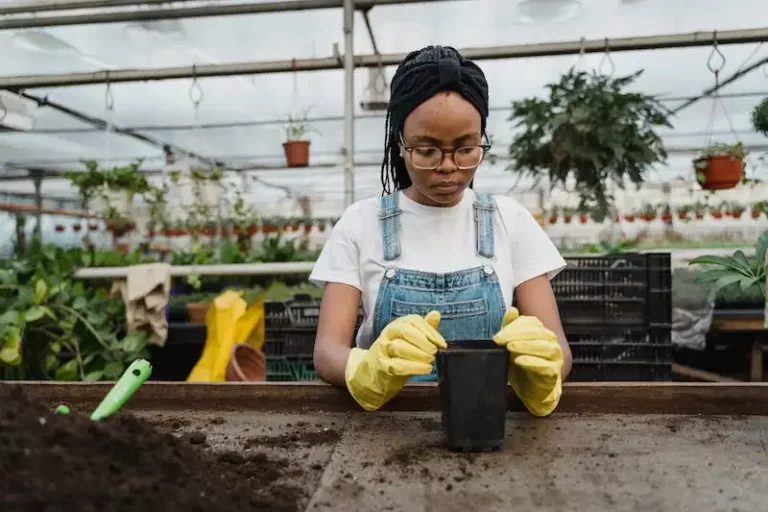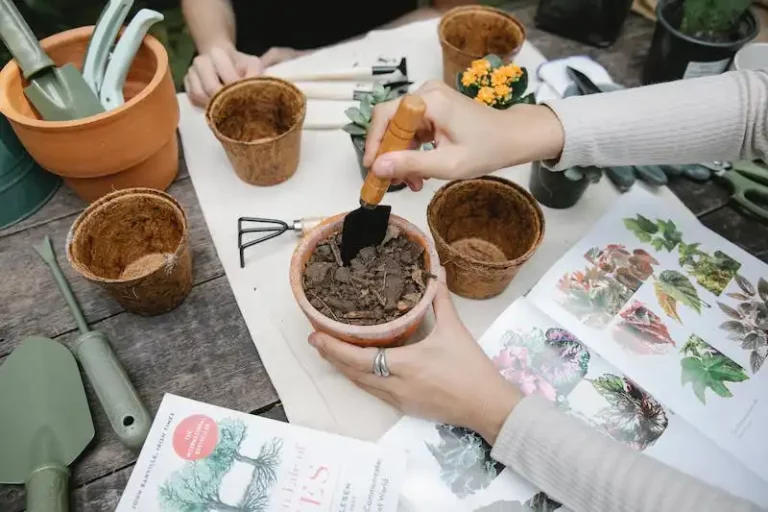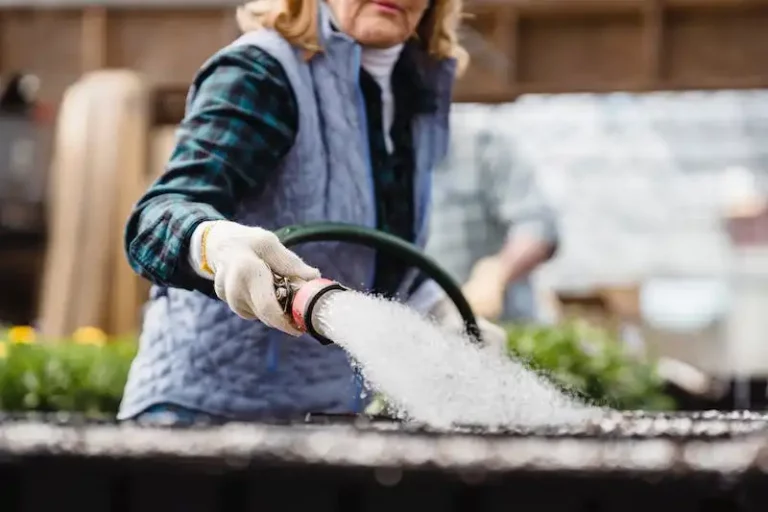If you are in a zone where winters are not too harsh and the soil is loose and well-drained, parsnips would be an excellent vegetable to grow in your garden. Parsnips are biennial plants that are ready for harvest in their second year. They are known for their unique flavor and can be used in various recipes such as soups and stews.
When planting parsnips, it is important to prepare the soil correctly. The soil should be loose and well-drained to allow for proper root development. Before sowing the seeds, make sure to remove any weeds and break up any clumps of soil. It is also important to test the soil’s pH level, as parsnips prefer a slightly acidic soil with a pH between 5.5 and 7.0.
Parsnips can be sown directly into the garden in early spring or late fall. Make sure to sow the seeds on the surface of the soil and keep the rows about 12 to 18 inches apart. The seeds should be spaced about an inch apart. If you have limited space or live in an area with a short growing season, you can also grow parsnips in containers. Just make sure the containers are at least 12 inches deep and have plenty of drainage holes.
Parsnips require regular watering, especially during dry periods. However, overwatering can cause the roots to rot, so it is important to find the right balance. Water the plants deeply once a week, making sure to provide enough moisture without saturating the soil. It is also important to mulch around the plants to help retain moisture and suppress weeds.
Parsnips are relatively low-maintenance plants, but they can be susceptible to certain pests and diseases. Aphids and alternaria are common problems that parsnips may face. Regularly checking the leaves for aphids and applying insecticidal soap can help prevent their infestation. In case of alternaria, which causes pale spots on the leaves, removing the affected leaves and providing good airflow can help prevent the spread of the disease.
Harvesting parsnips can be done once the roots have reached their maturity, which is typically between 100 to 150 days after sowing. To check if the roots are ready, gently push the soil away from the top of the root and see if it looks large and tender. If the roots are still small and thin, they need more time to grow. It is also important to note that parsnips taste sweeter after they have experienced a cold period, so leaving them in the ground over winter can enhance their flavor.
In conclusion, growing parsnips requires proper soil preparation, regular watering, and attention to pests and diseases. However, with the right care, you can enjoy a bountiful harvest of delicious and tender parsnips. So why not give them a try in your garden this year and see the results for yourself? Don’t be surprised if your parsnips win the award for the biggest and tastiest vegetables!
How to Grow Parsnips in Your Garden
If you have a garden and want to try growing a new vegetable, why not give parsnips a try? Parsnips are easy to grow and add a unique flavor to your meals. In this guide, we will show you how to grow parsnips in your garden.
- Choose the right location: Parsnips grow best in zones 2 to 7. They need full sun to grow properly. Select a spot in your garden that gets at least six hours of sunlight each day.
- Prepare the soil: Parsnips thrive in loose, well-drained soils. Before planting, loosen the soil to a depth of at least 12 inches. Remove any rocks or weeds that may hinder their growth.
- Sow the seeds: Parsnip seeds are quite small and need to be spaced correctly for optimal growth. Plant them 1/2 inch deep and 2 inches apart in rows. If the soil is too dry, water it lightly before sowing the seeds.
- Mulch the area: To ensure the soil stays moist and cool, apply a layer of mulch around the parsnip plants. Mulches also help prevent weed growth and protect the roots from excess moisture.
- Water regularly: Parsnips need plenty of water to germinate and grow. Keep the soil consistently moist but be careful not to overwater, as this can cause fungal diseases. Water deeply and provide about 1 inch of water per week.
- Thin the seedlings: Once the parsnip seedlings emerge, thin them to ensure proper spacing. Leave about 3 to 4 inches between each plant to give them enough room to grow. This will help prevent overcrowding and ensure healthy plants.
- Fertilize as needed: Parsnips are not heavy feeders, but they do benefit from a balanced fertilizer. Apply a slow-release organic fertilizer during planting and again mid-season if needed.
- Protect from pests: Parsnips can be prone to aphids and other pests. Monitor your plants regularly and take action if you notice any infestations. Use organic pest control methods to protect your parsnips.
- Harvesting: Parsnips are ready to harvest when they reach a mature size of about 1 inch in diameter. Use a fork or spade to carefully lift the parsnips from the ground. Avoid overhandling the roots, as they can easily bruise.
Now that you have a guide on how to grow parsnips, you can start planting them in your garden. Enjoy the process and the delicious flavors that parsnips add to your meals!
Recommended Parsnip Varieties
When growing parsnips, it is important to choose the right varieties that will thrive in your growing conditions. Here are some recommended parsnip varieties that are known for their excellent flavor and disease resistance.
| Variety | Description |
|---|---|
| Gladiator | This variety is highly recommended for its resistance to fungal diseases and its ability to produce long, straight roots. It is best suited for well-drained, sandy soils. |
| Hollow Crown | Hollow Crown is one of the oldest and most popular parsnip varieties. It has a sweet and nutty flavor and is well-suited for growing in all types of soils. |
| Tender and True | This variety is known for its resistance to diseases and pests. It has a mild, sweet flavor and can be harvested throughout the winter months. |
When choosing a parsnip variety, it is important to consider the growing conditions in your garden. If you have poorly drained soil, you may want to choose a variety that is more tolerant of wet conditions. On the other hand, if you have sandy soil, a variety that is more drought-tolerant may be best.
Before sowing parsnip seeds, it is recommended to prepare the soil by removing any weeds or grass and adding organic matter to improve fertility. Parsnips prefer a pH range of 5.8 to 7.5, so it is a good idea to test your soil before planting. If your soil is acidic, you can add lime to raise the pH.
Parsnips are slow to germinate, taking anywhere from two to three weeks, so it is important to keep the soil moist and mulched to retain moisture. Mulching with organic mulches, such as straw or compost, can also help suppress weeds.
When planting parsnip seeds, sow them about half an inch deep and keep them well-watered until they germinate. Parsnips prefer cool weather, so early spring or fall planting is best.
Throughout the growing season, it is important to provide regular care to your parsnip plants. This includes watering, fertilization, and monitoring for any signs of diseases or pests. If you notice any issues, such as yellowing leaves or brown spots, it is best to consult with your local extension office for troubleshooting advice.
Parsnips are typically ready to harvest when they reach their mature size, which is usually around three months after planting. To harvest, gently wash the roots and trim off any green tops. Parsnips can be stored in a cool, dry place for several weeks.
Overall, with the right preparation and care, you can grow nice, healthy parsnips in your garden. Just ensure that you choose the right variety for your growing conditions and provide the necessary conditions for their growth. Happy parsnip planting!
How to Grow Parsnips
When it comes to growing parsnips, it can be a relatively easy and rewarding experience. Parsnips, a cousin of the carrot, have a long taproot that is harvested for its sweet and nutty flavor. If you are looking to grow your own parsnips, here is a guide on how to get started:
- Choose the right variety: There are several different varieties of parsnips to choose from, such as Gladiator and Thompson. Before sowing your seeds, do some research to determine which variety would be best for your specific growing zone.
- Prepare the soil: Parsnips prefer a cool and deeply composted soil. Before planting, make sure to remove any rocks or debris from the surface and mix in some sand to improve drainage.
- Sow the seeds: Parsnip seeds can be sown directly into the soil starting in early spring. Place the seeds about an inch deep and keep the rows about 12-18 inches apart to allow for proper growth.
- Keep the soil moist: Parsnip seeds can take a while to germinate, so it is important to keep the soil evenly moist. Be sure to water the seeds regularly, especially during dry spells.
- Mulching: Mulching around the parsnip plants not only helps to retain moisture in the soil but also prevents weed overgrowth. A layer of mulch will also protect the parsnips from rapid temperature changes and frost.
- Care for the plants: Parsnips require minimal care, but it is important to keep an eye out for any problems or diseases. Leafhoppers and overwatering can cause damage to the plants, so be vigilant in controlling these issues.
- Harvesting: Parsnips can be harvested starting in the fall, after they have been growing for several months. Use a garden fork to carefully lift the parsnips from the soil, being cautious not to damage their long taproot.
- Storing: Parsnips can be stored for several months if stored properly. Wash and dry the parsnips before storing them in a cool and dark place, such as a root cellar or a cool basement. They can also be stored in containers filled with sand for long-lasting freshness.
So now that you know how to grow parsnips, why not give it a try? These delicious and nutritious root crops are a great addition to any garden. Enjoy the process and savor the flavors of your homegrown parsnips!
Soils
When it comes to growing parsnips, soil is a critical factor. Parsnips prefer a well-drained soil that is deeply worked and free of rocks and debris. They can tolerate a range of soil types, but they thrive in loose, loamy soil. If your soil is heavy with clay, you may need to amend it with sand or organic matter to improve drainage.
Parsnips are deep-rooted plants, so it’s important to prepare the soil deeply before planting. Dig the soil to a depth of at least 12 inches and remove any large clumps or stones. This will ensure that the parsnip roots can grow long and straight.
Before sowing parsnip seeds, make sure the soil is fine and free of clumps. If the soil is too compacted, the parsnip roots may not be able to penetrate it and will have trouble growing straight. Breaking up any large clumps and removing debris will create a favorable environment for germination and root growth.
Parsnips can be planted in early spring, as soon as the soil can be worked. They prefer cool soil temperatures between 45 and 85 degrees Fahrenheit. In warmer climates, it’s best to plant parsnips in the fall for a winter harvest.
In terms of nutrition, parsnips are relatively low-maintenance plants. They don’t require much nitrogen, so fertilization should be minimal. However, make sure the soil is well-balanced in terms of other nutrients. A soil test can help determine if any additional amendments are needed.
Water is key to the growth of parsnips. The soil should be kept consistently moist, but not waterlogged. Irrigate deeply, providing around 1 inch of water per week. When the plants are young, water every 7-10 days to help establish a strong root system. As the plants mature, water less frequently, but deeply.
Parsnip leaves should be planted in full sun to ensure good growth and development. They can tolerate partial shade, but full sun is best. Be sure to provide ample spacing between plants, as crowded conditions can lead to fungal diseases and poor growth. Aim for a spacing of 4 to 6 inches between plants and 12 to 18 inches between rows.
Parsnips are typically ready to be harvested 90 to 120 days after planting. One way to determine if they are ready is by looking at the leaves. When the leaves begin to turn pale and the tops are looking nice and ready, it’s time to start harvesting. Be careful not to damage the parsnip roots when digging them up. Use a garden fork or shovel to carefully loosen the soil around the roots and lift the plants out of the ground.
If you have any questions or need more information, you can always reach out to your local extension office for guidance. They can provide you with a guide on growing parsnips specific to your region and help troubleshoot any issues you may be experiencing.
In terms of post-harvest care, parsnips can be stored for several months if handled correctly. Remove the leaves and store the roots in a cool, dry place, such as a root cellar or a box filled with sand. Make sure the roots are not touching each other to prevent rotting. Check the roots occasionally and remove any that are damaged or spoiled.
Parsnips can also be propagated by saving seeds from the second year plants. Allow the plants to flower and produce seed heads. Once the seed heads have dried, harvest and store the seeds in a cool, dry place. They can be sown in the following year for a continuous supply of parsnips.
In conclusion, parsnips are relatively easy to grow but require proper care and attention. Pay close attention to soil preparation, watering, and fertilization to ensure healthy and productive plants. By following the recommended practices and addressing any potential issues, you can enjoy a bountiful harvest of delicious parsnips.


